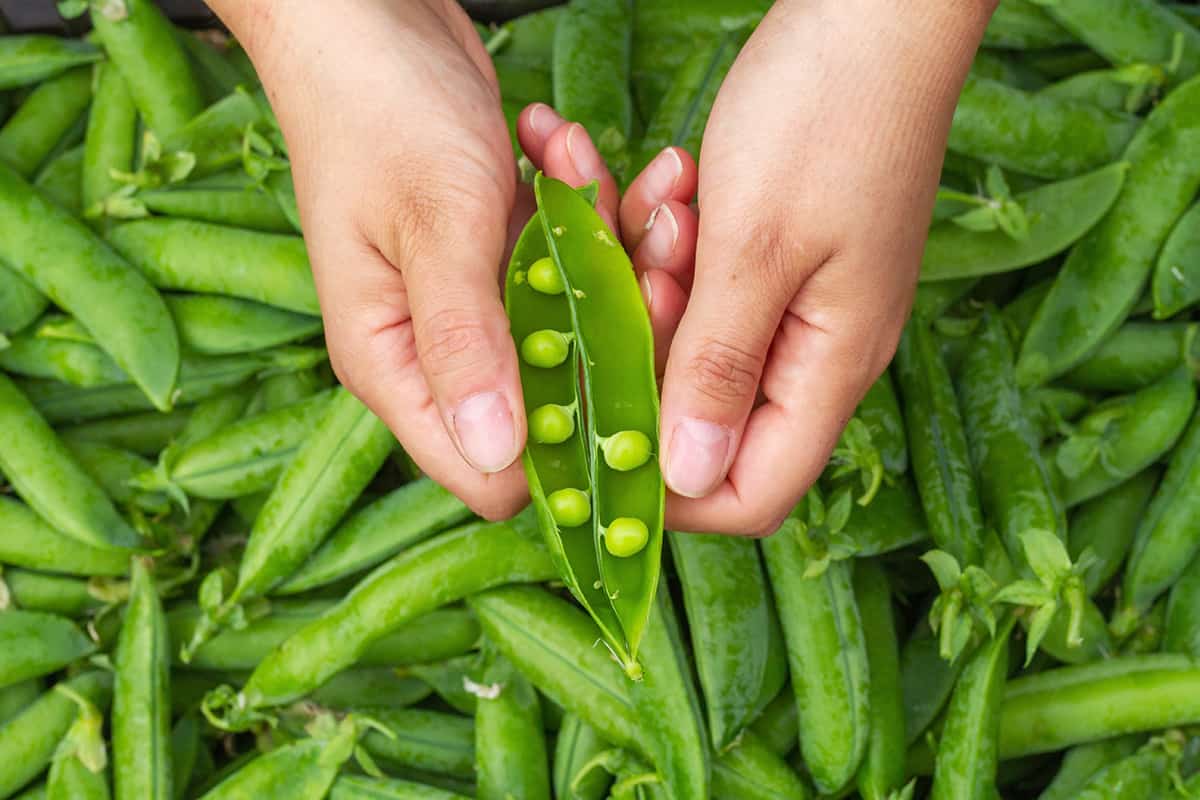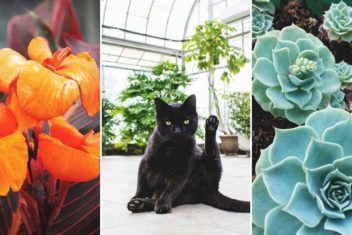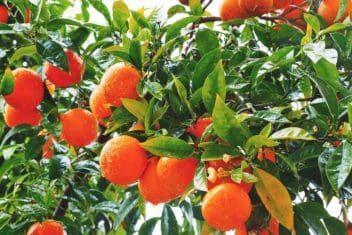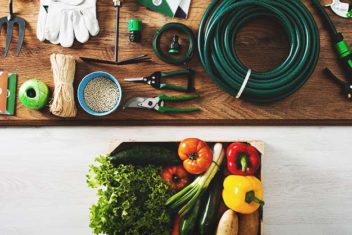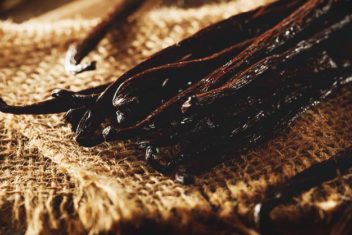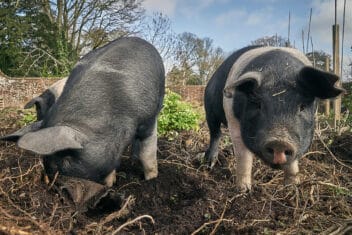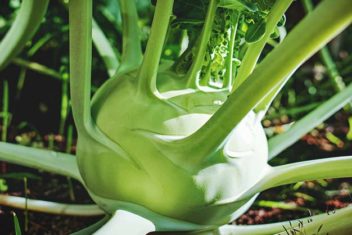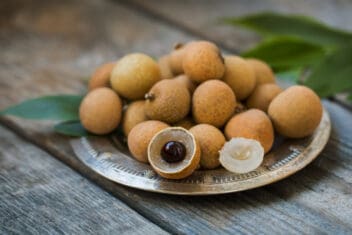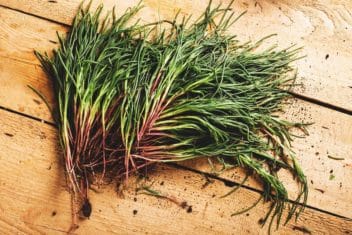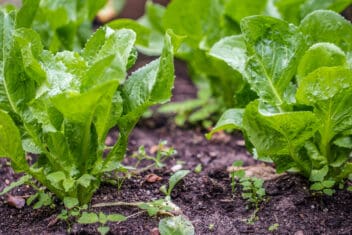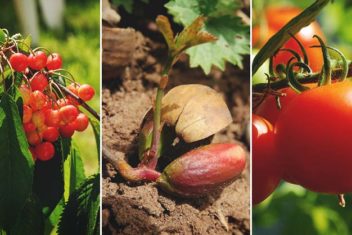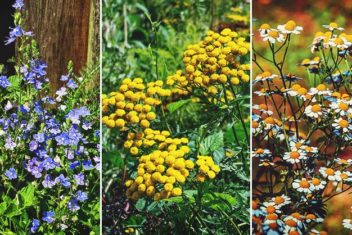When I planted my peas last spring, it occurred to me that I had never heard of anyone planting fresh peas before. I started asking around, and nobody had ever even thought about the idea. Everyone had been raised by just popping nice, dry peas and beans into moist soil in the springtime.
I consulted planting guides and botany books and checked out almanacs dating back to the mid-1800s. Absolutely none of them mentioned the possibility of planting these seeds fresh! Needless to say, I had to get started on some research to find out whether this could actually work or not. Here’s what I found.
Experimentation
Since I couldn’t find any resources for this topic, I decided to experiment a little bit. When I harvested my first pea crop of the year, I planted some fresh peas immediately to see what would happen.
Bupkis happened.
Well, that’s not entirely true: the fresh peas rotted in the ground quite merrily, undoubtedly depositing tons of nitrogen into the soil for the next crop. That wasn’t a total waste, at least.
This confused me. After all, I’ve planted freshly developed tomato, pepper, lettuce, and other seeds immediately and they all did just fine. So what’s going on with legumes?
They Will Only Germinate When Mature
Since the fresh peas didn’t germinate when I planted them, I let the next batch dry out on the vine quite a bit before trying to plant them. I didn’t let them dry enough for the pod casings to go brown and crispy, however. Instead, I just waited until the seeds were difficult to bite into. They tasted mealy and dry and would have needed to be cooked down into soup in order to be edible.
Guess what happened?
If you guessed that these germinated, then get yourself a biscuit because you’re right. Not only did these germinate beautifully, but the germination rate was also even higher than the dried peas I’d saved from the year before.
This appears to be the magic answer I was looking for. Of course, I had to redo the experiment with several different pea and bean species in order to ensure that I got the same results. Fortunately, I did! The exact same thing happened with black beans, fava beans, chickpeas (garbanzos), and soup peas.
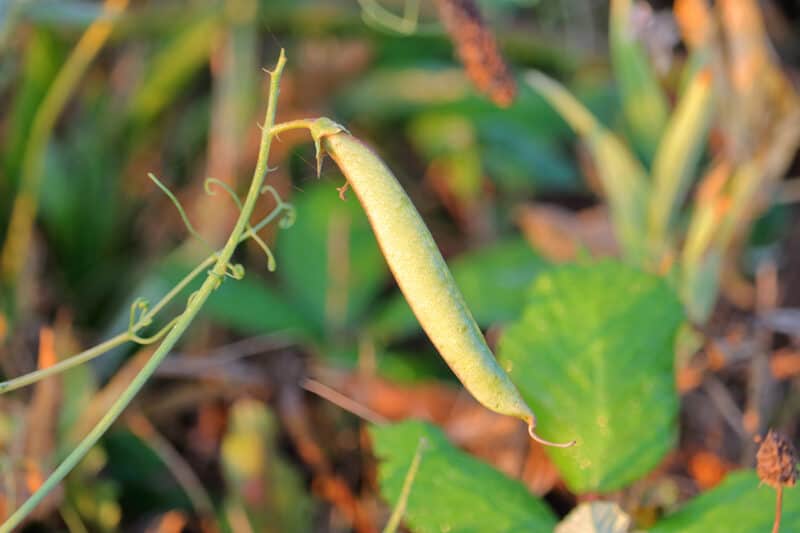
These legumes only germinated once they had matured to inedibility. They didn’t need to be dried completely in order to leap into action! Of course, if you want to save a bunch of your legume seeds for next season, you absolutely have to dry them completely.
I once made the mistake of packing up almost dried peas to plant the following spring and discovered a colorful packet of mold several months later.
If you’re looking for an ideal way to dry your peas and beans for next year, then check out our article about that topic here. Otherwise, let’s get into how you can plant your freshly matured legumes as soon as possible.
Re-Create Ideal Conditions for Germination
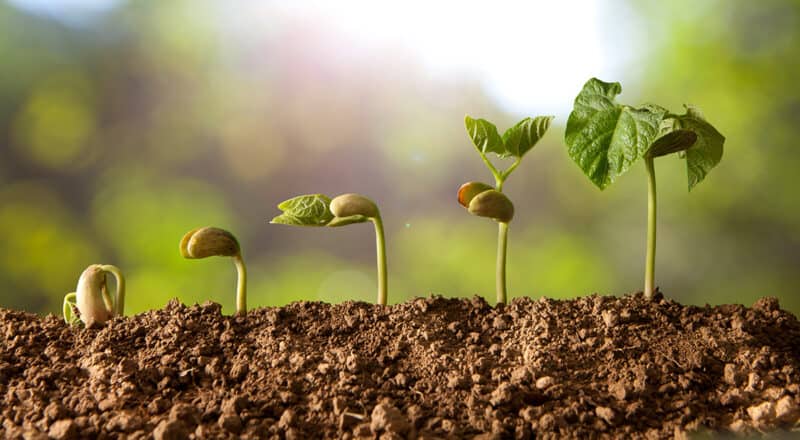
So, in order for peas and beans to germinate, they need to experience a certain set of conditions. In this case, they need moisture and a surrounding temperature of at least 65°F to 75°F. As you can imagine, planting them successively as soon as they mature on the vine means that you’ll be sowing them throughout the summer and early autumn.
This means that the conditions will be absolutely perfect.
Of course, if your legume seeds are still damp and juicy, these conditions—however ideal—won’t “trigger” them to start germinating. In simplest terms, they won’t be startled into their growing period because they’re not receiving the right signals to do so. Their moisture content will make them think that they’re still developing, so the internal metabolic activity is still slow.
This will spring into action after they’ve dried out and you offer them a big drink of water. The process of sucking up that big drink is known as imbibation, and it will shake them awake. Imagine it like throwing a bucket of water on someone who’s sleeping, only instead of a person, it’s a seed.
The giant gulp (imbibation!) swells the seed so it cracks its coat (aka the testa). Only when this cracks open can germination begin in earnest.
Tips for Planting Beans and Beans Successively
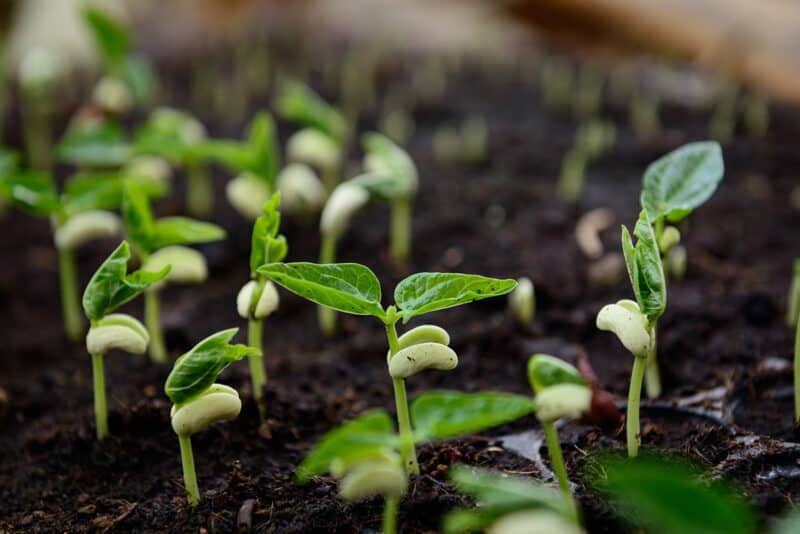
You may not be able to plant fresh peas and beans immediately after they develop, but that doesn’t mean you can’t plant successive crops. You just need to ensure that you replenish the soil before planting the next batch.
Legumes fix nitrogen into the soil, so you don’t need to add more of it. In fact, adding nitrogen-rich compost can lead to a poor crop. Instead, amend your soil with compost that’s higher in potassium and phosphorous. Make sure to work some sand or perlite in while you’re at it since these plants need soil that’s well-draining.
Keep the soil moist, but not waterlogged, and plant the mature legumes about 1/2 an inch into it. They’ll sprout before you know it, and you’ll soon have an entirely new batch of peas to tend. Then you can harvest them when they ripen and start the process all over again!
